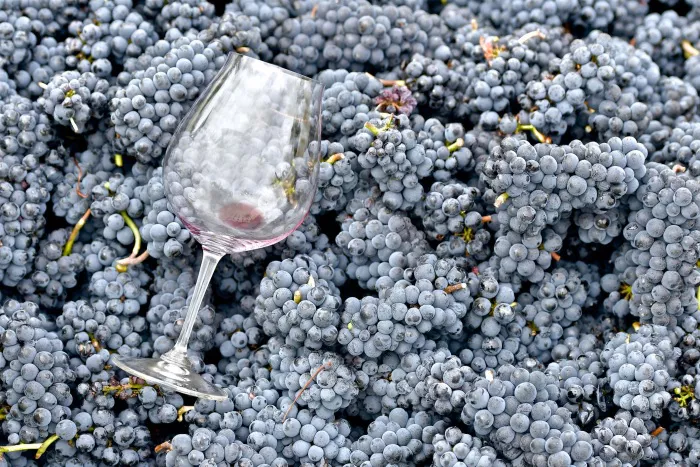When exploring the captivating world of wines, one might inquire, “What color is Chardonnay?” This noble and versatile grape varietal has earned a place of distinction among wine enthusiasts worldwide. Understanding its color spectrum, from the lightest straw hues to deeper golden tints, unveils not only the diversity within Chardonnay but also the fascinating factors that influence its appearance.
Origins and Evolution of Chardonnay: A Journey through Time and Terroir
The history of Chardonnay, stretching back centuries, reveals a grape shrouded in mystery and intrigue regarding its origins. While its exact birthplace remains a subject of debate among oenophiles, its prominence in Burgundy, France, signifies its deep-rooted connection to this region. The early iterations of Chardonnay displayed a spectrum ranging from pale yellow to a more straw-like hue, reflecting the climatic conditions and soil composition of Burgundy’s terroir.
Understanding the Grape: Impact on Chardonnay’s Color Palette
The natural characteristics of Chardonnay grapes significantly influence the wine’s final color. The thin-skinned nature of these grapes allows winemakers to extract varying levels of color during the winemaking process. Factors such as grape maturity, vineyard elevation, and exposure to sunlight all play pivotal roles in determining the hue of Chardonnay wines. Younger Chardonnays often showcase a pale straw-like color, while oak-aged versions tend to exhibit richer golden tones, owing to the aging process and contact with oak barrels.
Winemaking Techniques and Their Influence on Chardonnay’s Color
The winemaking process itself serves as a canvas upon which the color of Chardonnay is painted. Upon harvesting, the grapes undergo pressing, where winemakers decide whether to include the grape skins in the fermentation process. Skin contact, albeit brief for white wines like Chardonnay, can impart subtle color variations. Fermentation vessels, whether stainless steel or oak barrels, also contribute to the wine’s hue. Stainless steel tanks often preserve the grape’s natural color, while oak imparts deeper, golden hues due to the interaction between wine and wood.
Regions and Climate: Exploring the Influence on Chardonnay’s Color Profile
The geographic location and climate in which Chardonnay grapes are cultivated wield a profound impact on the resulting wine’s color. Cool climate regions typically produce Chardonnays with higher acidity and lighter color profiles, while warmer climates often yield fuller-bodied wines with deeper golden tones. The Old World regions, like Burgundy, tend to craft Chardonnays with a pale, delicate color, while New World regions such as California and Australia often showcase a more robust and golden appearance.
Aging Potential: Unveiling Chardonnay’s Transformation Over Time
Chardonnay’s ability to evolve and develop complexity with age is a defining characteristic. Younger Chardonnays exhibit vibrant, youthful colors, whereas aged Chardonnays display deeper golden hues due to the complex chemical changes occurring within the wine. As these wines mature in the bottle, oxidation and interactions with compounds present in the wine lead to a gradual transformation in color, often transitioning from a pale straw-like hue to a richer, deeper gold.
The Art of Tasting: Appreciating Chardonnay’s Color and Its Significance
When appreciating Chardonnay, the visual aspect is a crucial component of the tasting experience. The wine’s color offers insights into its age, style, and potential flavor profile. Observing the hue—whether it’s a pale lemon, golden yellow, or even hints of green—sets the stage for what’s to come on the palate. A deeper gold might indicate oak aging or maturity, while a lighter tone suggests a fresher, crisper wine. Swirling the wine in the glass allows light to play upon its surface, offering further glimpses into its depth and brilliance.
Pairing Chardonnay with Cuisine: Matching Colors and Flavors
The diverse color spectrum of Chardonnay pairs beautifully with an array of cuisines. Lighter, crisper Chardonnays complement seafood, salads, and lighter fare, enhancing the dining experience with their refreshing acidity. Meanwhile, fuller-bodied and golden-hued Chardonnays harmonize exquisitely with richer dishes like roasted chicken, creamy pasta, or dishes with buttery sauces, owing to their weight and complexity.
Conclusion: Appreciating Chardonnay’s Multifaceted Color Palette
In conclusion, the question “What color is Chardonnay?” leads us into a captivating exploration of this renowned grape varietal. From the delicate straw-like tones of youth to the deeper, golden hues of maturity, Chardonnay’s color palette reflects the amalgamation of factors—terroir, winemaking techniques, climate, and aging potential—that contribute to its remarkable diversity. Embracing the visual nuances of Chardonnay adds another layer of appreciation to this beloved wine, inviting enthusiasts to savor its complexities with every sip.


